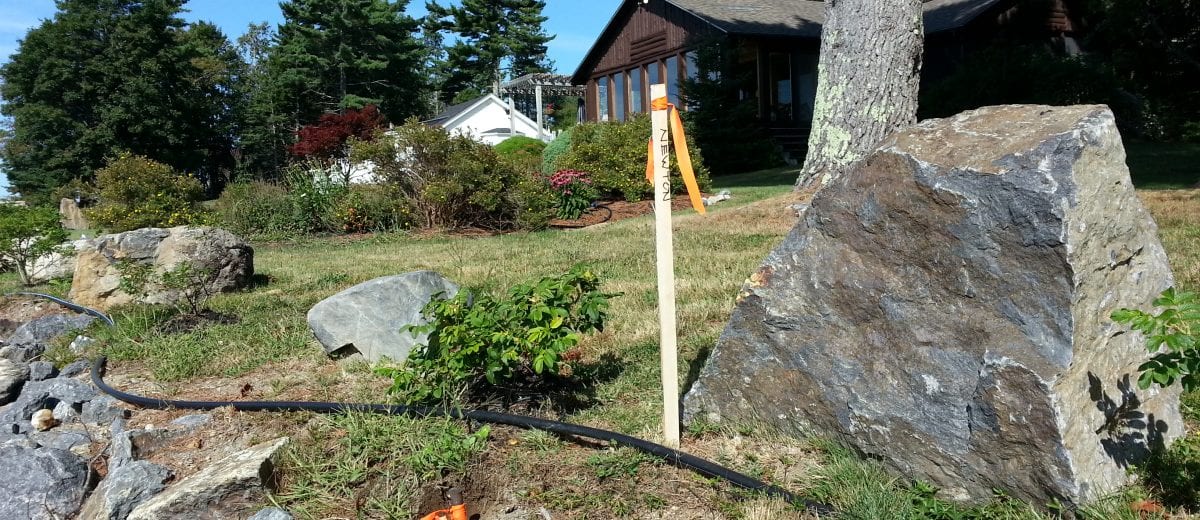A setback from a property line or road is usually a set distance in accordance with a town’s land use ordinance (zoning). Once we know where the boundary line is located, this setback determination is straight forward. Herrick & Salsbury, Inc. is frequently asked by clients to stake setback lines prior to clearing and construction. Setbacks may be from either a property line, wetlands, protected wildlife habitat, a stream, river, lake or ocean. Zoning and the State of Maine rule both regulate what a setback requirement might be.
Setbacks from protected wildlife or natural resources are not always obvious. A biologist, soil scientist or agency personnel may be required to make an on-site visit to determine the starting point of a setback measurement. Herrick & Salsbury Inc. will coordinate a visit if necessary, locate the starting point(s) and calculate the setback line location.
When asked to determine the setback from the shoreline, especially along oceanfront property, there are many variables that determine where the starting point of the setback measurement is to be taken. The local Shoreland Zoning Ordinance will be one of the documents we will interpret for you.
Our typical checklist consists of:
- Checking Shoreland Zoning map (waterbodies, resource protection and streams)
- Checking local Shoreland Zoning Ordinance for setbacks
- Checking the FEMA flood map
- Checking the Coastal Bluff mapping when adjacent to tidal areas
- Checking Maine Inland Fisheries and Wildlife Habitat database
- Look for stream or tributary stream on the property
- Checking Maine Significant River Segment list if a major river
- Checking US Fish and Wildlife Service National Wetland Inventory database
- Checking for Critically Imperiled Natural Community (Think Indian shellfish heap along shore, gravesite, cemetery, area of special botanical feature, etc.)
On any oceanfront property, the setback from the shore could be measured from what is referred to as the edge of a coastal wetland boundary. The Maine Department of Environmental Protection annually publishes a table listing what the elevation of a community’s coastal wetland boundary shall be. That elevation is the predicted height of the annual spring high tide. We will measure the elevation along the shoreline to interpolate where the starting point is for the shoreline setback if the most restrictive measure is from the coastal wetland boundary.
Other more restrictive areas could be from a coastal bluff, which in that case the starting point of the setback is from the top of the bank. Another feature could be shorebird habitat. The starting point of the setback is from the habitat.
Failure to measure from the correct starting point could lead to the town issuing a stop-work order and a violation notice. You can rely on Herrick & Salsbury Inc. to be your trusted advisor.
Let Us Help Explain
What Our Clients Say
Getting Started
Have questions about setback staking or what to expect? Check out our FAQs or reach out via our contact page.
